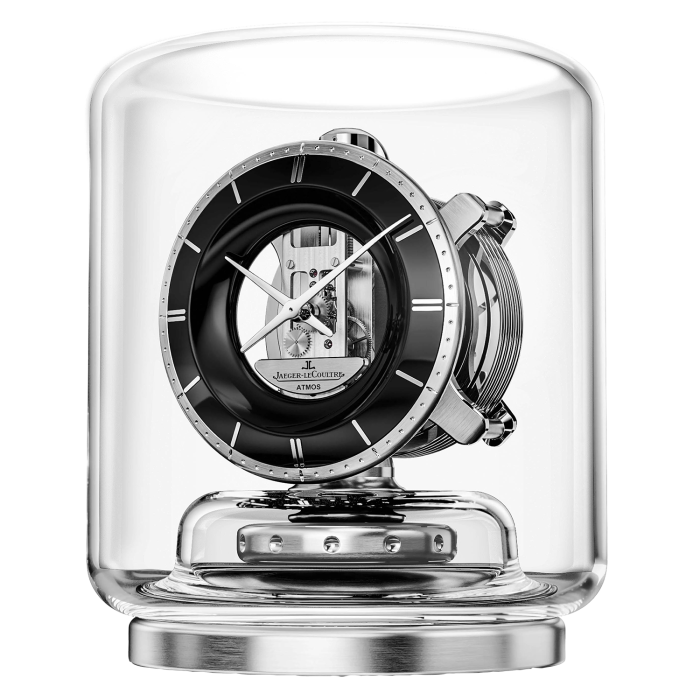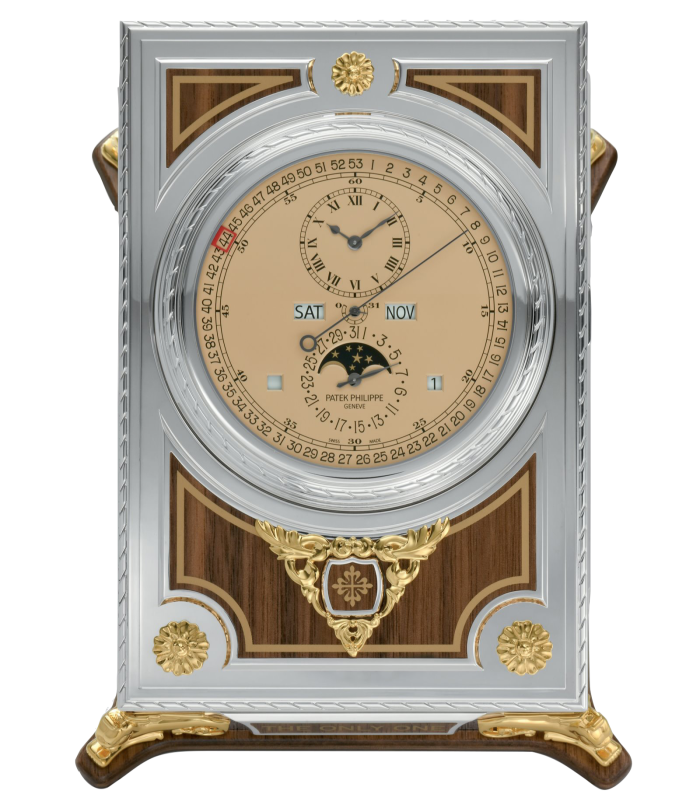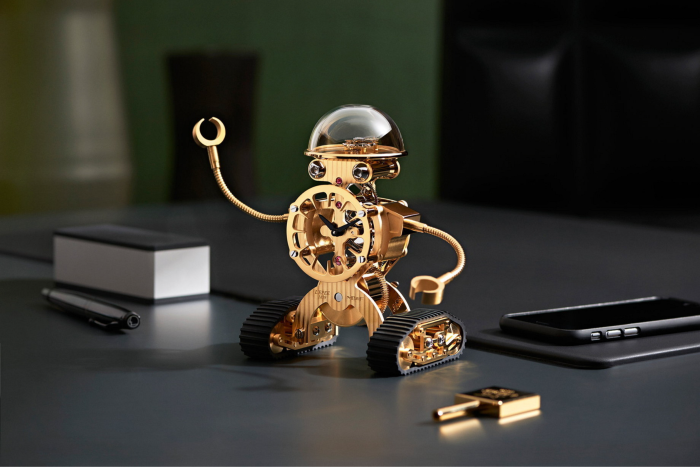Mechanical desk clocks wind their way back to popularity

Roula Khalaf, Editor of the FT, selects her favourite stories in this weekly newsletter.
If mechanical watches seem anachronistic in our digital age, the time-honoured desk clock is perhaps even more so — but, paradoxically, a luxury item that is ever more popular.
At this year’s Watches and Wonders trade fair in Geneva, the storied watchmaker Jaeger-LeCoultre unveiled two new models of its Atmos clock: the company’s famed timepiece that dates back to 1928 and which seems to run on air.
Fluctuations in temperature and a special gas-filled capsule ultimately wind the clock, with a change of just one-degree Celsius enough to power the clock for 48 hours.
In past years, Jaeger-LeCoultre has sparked interest in Atmos via cross-disciplinary collaborations with Hermès and the designer Marc Newson. But, this year, the maison looked within, creating two new pieces in-house.
The first was the celestial-themed Atmos Hybris Mechanica Calibre 590 (€500,000)— the brand’s most complex Atmos to date. Inspired by 18th-century tellurium mobiles and clocks that were used to map time via the skies, the clock has a tellurium function alongside the hour, minute, seasons and zodiac calendar. The clock is limited to 10 pieces, several of which were sold during the trade fair. The second Jaeger-LeCoultre clock announced at the show, the Atmos Infinite (€14,000), is more minimalistic in style and functionality, and comes housed in a chic and understated circular glass case.
Catherine Rénier, Jaeger-LeCoultre’s chief executive, hinted at more Atmos clocks to come, adding to a collection that aims to showcase mechanical “complexity and creativity”. She says the clocks and their ability to run sustainably on just a change in temperature resonate with younger buyers, who increasingly seek meaningful objects in a digitalised world.
“There is a return to essentials,” says Rénier. “I think the idea fits what we’re all looking for: something that makes sense — and something deeply rooted in the timelessness of objects.”
Patek Philippe has long created desk clocks, with interest waxing and waning throughout its 183-year history. But, now, they seem especially popular. Dome table clocks feature in its Rare Handcrafts collection, which each year sees some 40 one-of-a-kind wristwatches, pocket watches and table clocks produced, the latter a kind of canvas for highlighting métier d’art such as cloisonné enamelling and engraving. The dome clocks are highly coveted and only available to long-term clients, but they’re not the only Patek Philippe desk clock high in demand. Last year, for the biennial Only Watch charity auction, the watchmaker created a special, grand complication desk clock that nodded to a historic 1923 clock from its archives. The piece sold for SFr9.5m ($9.96mn) — far exceeding its estimate of SFr400,000-SFr500,000 — and accounted for more than 30 per cent of the auction’s total proceeds.

The 53-lot Only Watch sale featured three desk clocks in all, including the one-off Ulysse Nardin UFO, which sold for nearly five times its high estimate at SFr380,000. The UFO collection was created in April last year to commemorate the maison’s 175th birthday, and the 264mm-tall, three-time zone desk clock can playfully oscillate on its axis up to 60 degrees — recalling the maison’s lineage in 19th-century ship’s watches and marine chronometers. Limited to 75 pieces, the clock quickly sold out, with Patrick Pruniaux, chief executive of Ulysse Nardin, adding that the UFO’s “extremely desirable” contemporary design, “very easy to understand” specs — such as a one-year power reserve — and strong back-story all combined to make the clock a success.
“I think consumers want to express themselves differently now,” he says, adding that buyers of desk clocks also seek functional items that can be used daily. “It’s one of the nicer objects that you can have either at home or work.”
Indeed, contemporary, avant-garde design is seen as the driving force — and future — of desk clocks. This is most embodied by the pioneering, independent watchmaker MB&F, which has been partnering with the storied Swiss clockmaker L’Epée 1839 since 2014. The pair’s first collaboration, the sci-fi inspired Starfleet Machine (SFr28,000; limited to 175 pieces) was created by MB&F and manufactured by L’Epée. It kicked off a partnership of some two clocks per year, with motifs ranging from robots and rockets to jellyfish and spiders.
Charris Yadigaroglou, MB&F’s chief communications officer, recalls how the first designs took off and made clocks cool again.
“They really opened up this whole new aesthetic,” he says. “Most of the clocks are not bringing anything massively new in terms of technology or technique. It’s the good old clocks movements we know . . . But they’re more emotional in terms of what they represent — plus [they] are just cool objects. These were definitely conversation pieces, whereas the old fashioned clocks from before were maybe not so interesting.” To date, MB&F and L’Epée have created 15 clocks, all limited in number and priced between SFr10,000 and more than SFr40,000, with the sweet spot between SFr15,000 to SFr30,000, says Yadigaroglou.

The partnership has transformed L’Epée’s core business, which has gone on to produce contemporary desk clocks for other watchmakers including Chanel and Bucherer. It was also behind the Ulysse Nardin UFO. Arnaud Nicolas, L’Epée’s chief executive and creative director, says that, since 2014, when it teamed up with MB&F and started a new line of contemporary clock design, revenues have increased between two to five fold annually. Today, the new line of clocks accounts for up to 97 per cent of its business.
There is even interest beyond horology and into the art world where, says Nicolas, the name L’Epée is unknown by 99 per cent of people. He sees a strong market for these new-age desk clocks, where a kind of storytelling has replaced traditional time telling.
“What we are selling today is a kind of experience — it’s not a clock anymore,” says Nicolas, “It’s a piece of art that speaks to the heart, to the soul. A clock today should evoke, inspire or even shock people.”
Comments